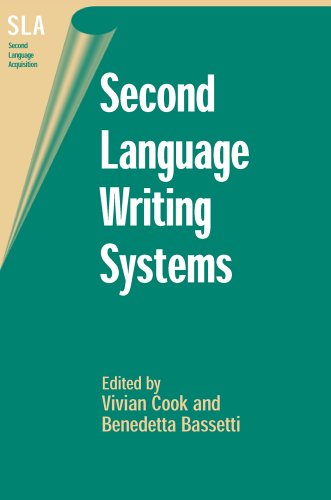

Most ebook files are in PDF format, so you can easily read them using various software such as Foxit Reader or directly on the Google Chrome browser.
Some ebook files are released by publishers in other formats such as .awz, .mobi, .epub, .fb2, etc. You may need to install specific software to read these formats on mobile/PC, such as Calibre.
Please read the tutorial at this link: https://ebookbell.com/faq
We offer FREE conversion to the popular formats you request; however, this may take some time. Therefore, right after payment, please email us, and we will try to provide the service as quickly as possible.
For some exceptional file formats or broken links (if any), please refrain from opening any disputes. Instead, email us first, and we will try to assist within a maximum of 6 hours.
EbookBell Team

4.3
48 reviews
ISBN 10: 1853597937
ISBN 13: 9781853597930
Author: Prof Vivian Cook, Benedetta Bassetti
Second Language Writing Systems looks at how people learn and use a second language writing system, arguing that they are affected by characteristics of the first and second writing systems, to a certain extent independently of the languages involved. This book presents for the first time the effects of writing systems on language reading and writing and on language awareness, and provides a new platform for discussing bilingualism, biliteracy and writing systems.
The approach is interdisciplinary, with contributions not only from applied linguists and psychologists but also corpus linguists, educators and phoneticians. A variety of topics are covered, from handwriting to spelling, word recognition to the mental lexicon, and language textbooks to metalinguistic awareness. Though most of the studies concern adult L2 learners and users, other populations covered include minority children, immersion students and bilingual children. While the emphasis is on English as the L2 writing system, many other writing systems are analysed as L1 or L2: Arabic, Chinese, Dutch, Gujarati, Indonesian, Irish, Italian and Japanese. Approaches that are represented include contrastive analysis, transfer, poststructuralism, connectionism and corpus analysis. The readership is SLA and bilingualism researchers, students and teachers around the world; language teachers will also find much food for thought.
Chapter 1: An Introduction to Researching Second Language Writing Systems Vivian Cook and Benedetta Bassetti
Part 1: Writing a Second Language Writing System
Part 2: Reading a Second Language Writing System
Part 3: Awareness of Language and Second Language Writing Systems
Part 4: Teaching a Second Language Writing System
second language writing systems
how many languages have writing systems
what is second language writing
languages with multiple writing systems
languages with different writing systems